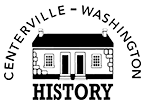Dr. John Hole
John Hole was born near Newark, New Jersey in 1755. Because of his intelligence, a prominent doctor requested that he adopt John as a foster son to educate and train him for the medical and surgical profession. So with his family's permission, John was sent to the University of Berlin in Germany in 1770 to medical school. He returned in 1775 and became caught up in the crisis between England and the colonies. He became a surgeon's mate in the militia near Boston and was present at the Battle of Bunker's Hill. He was also present when George Washington took command of the American forces at Cambridge, Massachusetts on July 3, 1775. He was reassigned to a division under the command of Brigadier General Richard Montgomery as his personal physician and surgeon. He participated in the Revolutionary War as a soldier and a physician. He was in attendance when General Richard Montgomery died of wounds.
John married Mercy Ludlow on August 14, 1778. Massee, as she was known, was the first cousin of Colonel Israel Ludlow who was the first surveyor to lay out the City of Cincinnati (called Losantiville until 1790). And she was distantly related to Daniel Cooper who surveyed the land of Dayton, Ohio.
John and Massee and their children moved to Losantiville in 1789 and John became the first doctor there. He is remembered for his practice of inoculation in the winter of 1792-3 when the smallpox first made its appearance. However, they were dissatisfied with conditions there after several years and John traveled north in search of a new home. He decided to settle on land northwest of Centerville in Washington Township along a good sized stream which he named Silver Creek. With land that he later added, he eventually owned 1440 acres. That location is today's northwest corner of the Mad River Road and Alex-Bell Road intersection. His home is no longer standing, but the original stone spring house can be seen from Mad River Road north of the windmill.
The family arrived in spring of 1797. John's three brothers, Daniel, William, and Zachariah came also and settled in Miami Township. Hole's Station eventually became Miamisburg.
Medical practice in Ohio was "generally a poor and miserable business" and not a means to support a family. Dr. Hole was paid with food, animals, or shoes. He was the only doctor available in Montgomery County for the first five years, but also covered territory south as far as Hamilton, north to Sydney, east to Springfield and Xenia, and west to the Indiana state line. His home was always open to travelers for lodging and a free meal.
The family gardened and John and his son hunted to provide food. He was a business leader and ran two sawmills that he built on Hole's Creek hear his home. He was also active as a citizen of a new community by surveying roads, and he was on the committee to name the new county. Dr. Hole suggested that they "...call it after my good general, Montgomery." He was an active member of Baptist Church of Sugar Creek in Centerville (now Cross Point Church) and was the first person baptized in Silver Creek. It was renamed Hole's Creek.
By 1812, Dr. John Hole's health had begun to fail due to the hardships of war, clearing his land and building his homes, traveling in the wilderness as a country doctor. He was forced to decline the position of Surgeon of the Army when it was offered at the outbreak of the War of 1812.
He died January 6, 1813 at age of 57 years and 9 months. The school on West Whipp Road, built on land once part of his homestead, was named Dr. John Hole Elementary School in his honor. He is buried in the Sugar Creek Baptist Church Cemetery.
Dr. John Hole's Gravestones
By Jean Simpson, Education Coordinator
The Curator, July/August 2008
In about 1796 Dr. John Hole settled on 1,440 acres along Silver Creek (later named Hole’s Creek), which he purchased with his military and bounty warrants granted to him for his service in the Revolutionary War. On this land he built a log cabin near a spring at the northwest intersection of Mad River and Alex-Bell Road. He later added two sawmills. Dr. Hole became the first doctor in Montgomery County and was one of the very first to practice medicine in the Northwest Territory. It was said that he traveled on horseback as far north as Piqua, as far south as Hamilton, as far east as Springfield, and as far west as the present Indiana line.
After a very productive life, Dr. Hole died in January, 1813 at the age of 57. He was buried in the Sugar Creek Baptist Cemetery (across from Incarnation Church). At first the burial site was marked by a sandstone gravestone. His wife, Massee died in 1842 and was buried next to him. In 1930, the Montgomery County Medical Society, in honor of his being the first physician in the Miami Valley, replaced his gravestone with a large granite monument. When the first Centerville elementary school was built in 1956 on land once owned by Dr. Hole, and it was named for him, the monument was moved from the cemetery to a site in front of the school. A smaller pink granite marker was then placed at his burial site in Sugar Creek Baptist Cemetery. Therefore, since he was buried in 1813, Dr. John Hole’s gravesite has been marked by three gravestones!
Resource: Wilderness Doctor: The Life and Times of Dr. John Hole by Howard Houser
